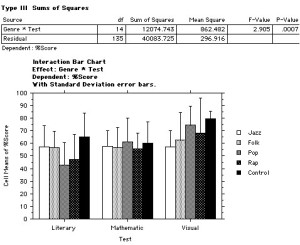I can’t think of a single person in university that hasn’t at least once resorted to some outside means of sustaining extra energy to study for a big test or get some work done-whether it’s coffee, energy drinks or some kind of supplement. In turn with other research I’ve done before about the incidence of stress and changes in dietary habits among university students, it got me thinking: can caffeine become a crutch of dependence for students? Where’s the line between the late-night kick of energy that can save a term paper, and something that can make you less productive and more dependent on the drug just to get through a day of class? Caffeine can produce physiological effects that hinder performance in all aspects like headaches and a chronic feeling of fatigue that is separate from things like lack of sleep, but can it produce symptoms of legitimate withdrawal if use of caffeine is even moderate?
First of all, it’s important to note that caffeine, is, in fact, a drug and a stimulant. Stimulants are psychoactive substances that, well, stimulate the brain and the nervous system and increase their functions respectively. Caffeine is a substance that’s available for use in medical forms without prescription and in illicit use for recreation or simply abusing the substance for performance. 1 in 7 college students admit to using ADHD medication for an edge on exam prep according to the National Institute on Drug Abuse, and seeing as ADHD meds are harder to obtain than a simple cup of high-caffeine coffee or a can of Monster, the need to look into what these kinds of products are doing to students is paramount.
Typical withdrawal symptoms of a drug include/ aren’t limited to:
Headache – (often described as being gradual in development and diffuse, and sometimes throbbing and severe)
Fatigue
Sleepiness or grogginess
Difficulty concentrating on simple tasks
Problems with work and staying on task throughout the day
Irritability i.e. “being pissy”
Depression/ some kind of negative malaise
Anxiety
Flu-like symptoms, nausea, sickness, cold sweats, etc.
Impairment in in modalities like spatial definition and hand-eye coordination

Coffee is such a staple for college students that even the idea of decaffeinated coffee could still perk someone up by placebo! This effect should definitely be looked into more in comparison to coffees with 200+mg of caffeine!
In meta-analyses of studies conducted on the effect of caffeine in adults, the studies had reported similarly that doses of caffeine in amounts of 200mg or more can increase tolerance and beginnings of anxiety in subjects, and sustained daily consumption of amounts around 700-1200mg can achieve complete tolerance on caffeine. Doses as low as 200 can interrupt natural sleep schedules as well! Now, here’s the important part: if dependence is a problem doses as low as 25mg of caffeine can reduce the effects of withdrawal in a subject, and the average caffeine content in a small cup (8 fl oz.) of coffee is at least 100-200mg, and even decaf of the same size is 2-12mg, half of what is necessary to curb withdrawal! The average caffeine content of a Redbull? one 8.4 oz. can is 80mg, and a 16 oz. is 154 mg. The average content in a 20 fl, oz. cup of Starbucks? 415mg. Whoah, Nelly.
What’s more is that in studies conducted (ahem) on the minimum effects of caffeine on consistent users and drinkers of these kinds of products. 52% of subjects had a daily intake of at least 260mg of caffeine, with 11% reporting abnormally high counts past 700mg, while 50% of all subjects report consistent headaches if they skip the latte for a day. Such a widely ranging demographic of usage can be seen amongst the different sizes and dosages of caffeine different drink products offer, and since these products are both popular and widely available, it’s a bit alarming to see how the drug can have consistent effects on a daily mood!
I think that further research in the future could focus on any potential links between substances being used together in any habits, such as coffee going with cigarette breaks, etc., because these variables could significantly impact the way caffeine’s effect on the body is understood. With energy drinks there are far more ingredients inside the can than simply caffeine, so varying combinations could have different implications for what a certain substance could change about caffeine’s properties once ingested and over time if use is consistent enough in an individual. I would think twice about getting that second cappuccino!
http://www.hopkinsmedicine.org/press_releases/2004/09_29_04.html
http://www.hopkinsmedicine.org/psychiatry/research/bpru/docs/caffeine_dependence_fact_sheet.pdf
http://www.medicaldaily.com/1-7-college-students-abuse-smart-drugs-improve-concentration-grades-262850
http://www.cspinet.org/new/cafchart.htm
http://caffeinetheenergyblog.blogspot.com/2011/05/review-for-red-bull.html













